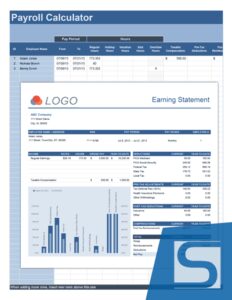Auditing Receivables and Revenues: A Guide
Accrual accounting makes the process of financial accounting more complex for businesses. Since revenue is recorded and reported with purchase orders and billable service hours, the accounting team is responsible for tracking both the revenue recognition event and the accounts receivable process. This then integrates the reporting of revenue and accounts receivable across the company’s financial statements. Accrual accounting refers to an accounting method used to gauge a company’s performance through the recognition of revenue at the time of sale. This allows businesses to be more upfront and clearly transparent to stakeholders about the sales that are occurring. The accrual accounting method is required for publicly traded companies that must conduct accounting through the use of generally accepted accounting principles (GAAP).

Revenue is the gross amount recorded for the sale of goods or services. As such, it is an asset, since it is convertible to cash on a future date. Accounts receivable is listed as a current asset on the balance sheet, since it is usually convertible into cash in less than one year. The CFS reconciles revenue into cash revenue, whereas the accounts receivable carrying value can be found on the balance sheet. Unique to subscription models, customers are presented with a multitude of payment methods (e.g. monthly, quarterly, annual), rather than one-time payments. Each month when the company delivers the service, $50,000 will be recognized on the income statement.
What Is a Receivable?
For example, one telecommunications company might sell bundled services while another may not. Revenue recognition is more complex (risky) for the company selling bundled services. Following the completion of the initial onboarding stage, the $40 can be recognized by the company as revenue. However, the recurring $20 monthly fee is charged on the first day of each month despite the product itself not being delivered until a couple of weeks later into the month. ASC 606 separated each specific contractual obligation with a company’s pricing to define how revenue is recognized.
- When you process revenue recognition, the system creates G/L journal entries to update the Account Ledger (F0911) with revenue, cost, and margins.
- Moreover, the audit standards state there is a presumption (unless rebutted) that revenues are overstated.
- Audit standards require that auditors review estimates for management bias.
- Revenue is the gross amount recorded for the sale of goods or services.
- This misleads your investors to believe that you’re growing when the reality is something different.
- Let’s say your total sales for the year are expected to be $120,000, and you’ve found that in a typical year, you won’t collect 5% of accounts receivable.
If the receivable amount only converts to cash in more than one year, it is instead recorded as a long-term asset on the balance sheet (possibly as a note receivable). The net reported amount of the gross receivable and the allowance is the amount of receivables outstanding that management actually expects to collect. But under accrual accounting, an upfront cash payment cannot be recognized as revenue just yet – instead, it’s recognized as deferred revenue on the balance sheet until the obligation is delivered.
Your money isn’t realized
In the case of a timing difference, over time, all variances are reconciled and net to zero for unbilled accounts receivable. Accuracy comes into play if the customer has complex receivable transactions. Additionally, the cutoff assertion is often relevant, especially if the client has incentives to inflate the receivables balance (e.g., bonuses triggered at certain income levels). So, it’s important that each business generate sales or some type of revenue. The objective of IAS 18 is to prescribe the accounting treatment for revenue arising from certain types of transactions and events.
Many private and small businesses also use GAAP accounting standards but they are not required to. The balance in the accounts receivable account is comprised of all unpaid receivables. This typically means that the account balance includes unpaid invoice balances from both the current and prior periods. Conversely, the amount of revenue reported in the income statement is only for the current reporting period.
IASB and FASB issue new, converged revenue standards
In accrual-based accounting you record the revenue only after it’s earned or recognized. Accountants use revenue recognition principle to identify and report how much of the deferred revenue is recognized, especially in SaaS Accounting. The directional risk for accounts receivable and revenue is an overstatement. So, in performing your audit procedures, perform procedures to ensure that accounts receivables and revenues are not overstated. Be sure that no subsequent period revenues are recorded in the current fiscal year.

For the last thirty years, I have primarily audited governments, nonprofits, and small businesses. Hi Charles,
I appreciate your step by step guidance and would want this looked at in the same manner but when it come to public sector audit Revenue is given little or no attention. Majorly because Governments are the biggest sources of revenue and they seem not to bother about the sourcing of these revenues. Uncollected amounts beyond 90 days should usually be heavily reserved. Fifth, think about the control deficiencies noted during your walkthroughs and other risk assessment work.
The most common examples of deferred revenue are gift cards, service agreements, or rights to future software upgrades from a product sale. But because the revenue is yet to be earned, the company cannot recognize it as a sale until the good/service is delivered. Accounts receivable (A/R) is defined as sales made on credit in which the customer has not fulfilled their obligation to pay the company. Following up on late customer payments can be stressful and time-consuming, but tackling the problem early can save you loads of trouble down the road.
SIGILON THERAPEUTICS, INC. Management’s Discussion and Analysis of Financial Condition and Results of Operations (form 10-Q) – Marketscreener.com
SIGILON THERAPEUTICS, INC. Management’s Discussion and Analysis of Financial Condition and Results of Operations (form 10-Q).
Posted: Tue, 09 May 2023 07:00:00 GMT [source]
Audit standards require that auditors review estimates for management bias. So, consider the current year allowance and bad debt write-offs in light of the prior year allowance. This retrospective review allows https://kelleysbookkeeping.com/marketing-for-accountants/ the auditor to see if the current estimate is fair. The threat is that management might reduce allowances to inflate earnings. Third, consider directional risk when auditing receivables and revenues.
IFRIC 12 — Service Concession Arrangements
When you set the Billing Constant to allow journal reclassification, the system creates the correcting journal entries in the Account Ledger during journal creation. For the last thirty years, he has primarily audited governments, nonprofits, and small businesses. He is the author of The Little Book of Local Government Fraud Prevention and Preparation of Financial Statements & Compilation Engagements. Charles is the quality control partner for McNair, McLemore, Middlebrooks & Co. where he provides daily audit and accounting assistance to over 65 CPAs. In addition, he consults with other CPA firms, assisting them with auditing and accounting issues.

You might want to give them a call and talk to them about getting their payments back on track. Here’s an example of an accounts receivable aging schedule for the fictional company XYZ Inc. In this case, you’d debit “allowance for uncollectible accounts” for $500 to decrease it by $500. By using this site, you are agreeing to security monitoring and auditing. As we ask questions, we also inspect documents (e.g., aged receivable reports) and make observations (e.g., who collects the payments?).
Direct Write-Off Method
Appendix A to IAS 18 provides illustrative examples of how the above principles apply to certain transactions. The IRS’s Business Expenses guide provides detailed information about which kinds of bad debt you can write off on your taxes. If a user or application submits more than 10 requests per second, further requests from the IP Recognition Of Accounts Receivable And Revenue address(es) may be limited for a brief period. Once the rate of requests has dropped below the threshold for 10 minutes, the user may resume accessing content on SEC.gov. This SEC practice is designed to limit excessive automated searches on SEC.gov and is not intended or expected to impact individuals browsing the SEC.gov website.
